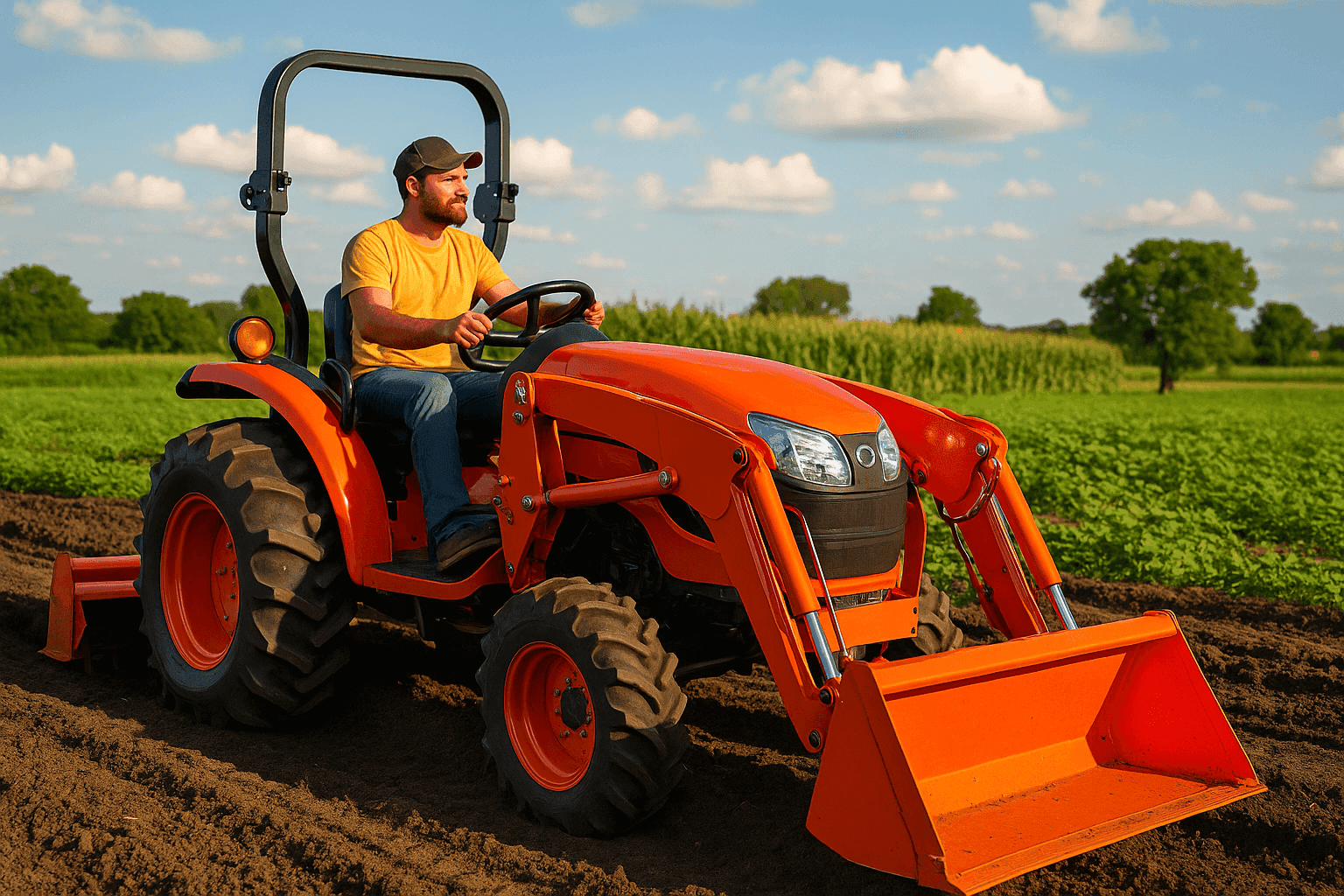The Small Tractor Revolution: Why Everyone’s Watching
For decades, small farms operated with little access to affordable, high-efficiency machinery. Now? That’s changing—fast. Compact tractors, once seen as luxury items or tools for large-scale farms, are becoming the unsung heroes of modern agriculture

It’s not just about convenience—it’s about survival. In a world where labor is scarce, fuel prices are volatile, and time is money, compact tractors are showing up as the smartest investment a small farmer can make.
🔧 Big Power, Small Footprint
What makes compact tractors such a game changer?
They pack a serious punch in a smaller package. We’re talking 20-60 horsepower machines with advanced attachments—tillers, front loaders, backhoes, seeders—doing work that used to require a small crew.
Their nimble size allows them to navigate tight spaces—greenhouses, orchard rows, backyard homesteads—with precision. That flexibility is key for diversified farms juggling livestock, produce, and soil management on limited acreage.
And the best part? They're fuel-efficient. Some models sip diesel like a hybrid car. Others run on electricity, further reducing operating costs.
🌾 From Backyards to Barnyards: Who’s Using Them?
Compact tractors are popping up in places you wouldn’t expect.
Suburban farmers are using them to convert idle land into micro-farms.
Homesteaders are replacing hand tools with PTO-powered equipment.
Vineyard owners are opting for narrow-width tractors to maneuver between rows.
What unites all these users? A desire for independence, control, and smart investment. These machines give them just that—without the overhead of hiring seasonal labor or renting equipment.
💸 The Price Tag Might Surprise You
One reason compact tractors are gaining steam? They're more affordable than ever.
Thanks to increased demand and streamlined manufacturing, you can now find new models under $15,000—with financing options designed for farmers who are just starting out. For many, that’s less than a used pickup truck.
Even used models hold value well, making them a strong long-term investment.
🛠️ Smarter Farming, Less Backbreaking Work
Beyond raw power, compact tractors bring something even more valuable: time savings.
Tasks like spreading compost, digging irrigation ditches, clearing brush, or laying fence posts can be done in minutes—not hours. That opens the door for small farm owners to grow their operations without burning out.
It’s why many farmers call their compact tractor the “best hire they ever made.”
🔍 What to Look for Before Buying
Thinking about investing in one? Here are a few smart tips:
Horsepower: Match the tractor’s power to your farm’s primary needs.
Attachments: Ensure compatibility with tools you’ll use most often.
Terrain: Consider 4WD for hilly or uneven land.
Warranty/Service: Stick with models backed by reliable dealer networks.
And always try before you buy—many dealers offer test runs or rental options.
🌱 Farming’s Future Is Smaller—and Smarter
In the past, “go big or go home” was the norm. Today, small is strategic.


